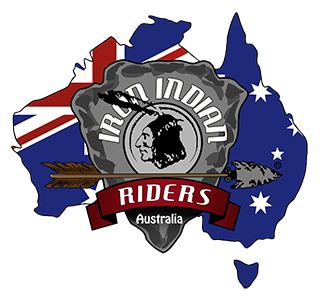EPA confirms Ethanol Fuel (Methylated Spirit) causes damage !

EPA confirms ethanol causes damage !
The American Environmental Protection Agency has acknowledged that overheating and component failures can be caused by ethanol in fuel. A media release from the American Motorcyclist Association says that the U.S. Environmental Protection Agency has publicly acknowledged that ethanol in gasoline can damage internal combustion engines by increasing exhaust temperatures and indirectly causing component failures. The EPA statements are found in a rule proposal issued by the Federal Trade Commission regarding a new label for pumps that supply fuel blends high in ethanol.According to the EPA: “Ethanol impacts motor vehicles in two primary ways. First … ethanol leans out the [air/fuel] ratio (increases the proportion of oxygen relative to hydrocarbons) which can lead to increased exhaust gas temperatures, increased piston crown temperatures and potentially increase incremental deterioration of emission control hardware and performance over time, possibly causing catalyst failure.“Second, ethanol can cause materials compatibility issues, which may lead to other component failures.” The EPA statements back the long-held position of the American Motorcycle Association, which has fought the distribution of E15 fuel blends in an effort to protect motorcycle and all-terrain vehicles from the damage that ethanol causes. ”Now the EPA acknowledges that ethanol itself is harmful to emissions hardware and other components on all motor vehicles,” said Wayne Allard, AMA vice president for government relations. “It is time for the federal government to pause, take a hard look at this product and change its entire approach to ethanol in fuels.” E15 is a formulation that contains up to 15 per cent ethanol by volume. The EPA has proposed rule to roll back the requirement for wider distribution and use of E15 under its Renewable Fuel Standard. In Australia, the most common fuel blend that is sold in Australia is E10 – 10 per cent ethanol blended with 90 per cent petrol. E85 blended fuel with 85% ethanol is also slowly being adopted. Within the EU, the use of ethanol in fuel is strictly restricted to E5, being just 5%.
REASONS WHY ETHANOL BLENDED PETROL IS NOT RECOMMENDED FOR USE IN OLDER VEHICLES: Introduction
The Federal Chamber of Automotive Industries provides the following information which outlines the key reasons why vehicle manufacturers do not recommend the use of any ethanol/petrol blended fuels in vehicles made before 1986. Ethanol has a number of important chemical and physical properties that need to be considered in a vehicle’s design.
Carburettor Equipped Engines: Vehicles made before 1986 vehicles were predominantly equipped with carburettors and steel fuel tanks. The use of ethanol blended petrol in engines impacts the air/fuel ratio because of the additional oxygen molecules within the ethanol’s chemical structure. Vehicles with carburettor fuel systems may experience hot fuel handling concerns. This is because the vapour pressure of fuel with ethanol will be greater and probability of vapour lock or hot re-starting problems will be increased. As a solvent, ethanol attacks both the metallic and rubber based fuels lines, and other fuel system components. Ethanol also has an affinity to water that can result in corrosion of fuel tanks and fuel lines. Rust resulting from this corrosion can ultimately block the fuel supply rendering the engine inoperable. Water in the fuel system can also result in the engine hesitating and running roughly.
Fuel Injected Engines: In addition to the issues mentioned above for carburettor equipped engines, the use of ethanol blended petrol in fuel injection systems will result in early deterioration of components such as injector seals, delivery pipes, and fuel pump and regulator.Mechanical fuel injection systems and earlier electronic systems may not be able to fully compensate for the lean-out effect of ethanol blended petrol, resulting in hesitation or flat-spots during acceleration.Difficulty in starting and engine hesitation after cold start can also result.
Exhaust And Evaporative Emission Levels: Lean-out resulting from the oxygenating effect of ethanol in the fuel may affect exhaust emissions. Of more concern is that fuel containing ethanol can increase permeation emissions from fuel system components, particularly those that have aged for nearly 20 years. Therefore the increased vapour pressure of fuel with ethanol will lead to increased evaporative emissions.(Bring back Leaded Fuel it was safer, editors note)
